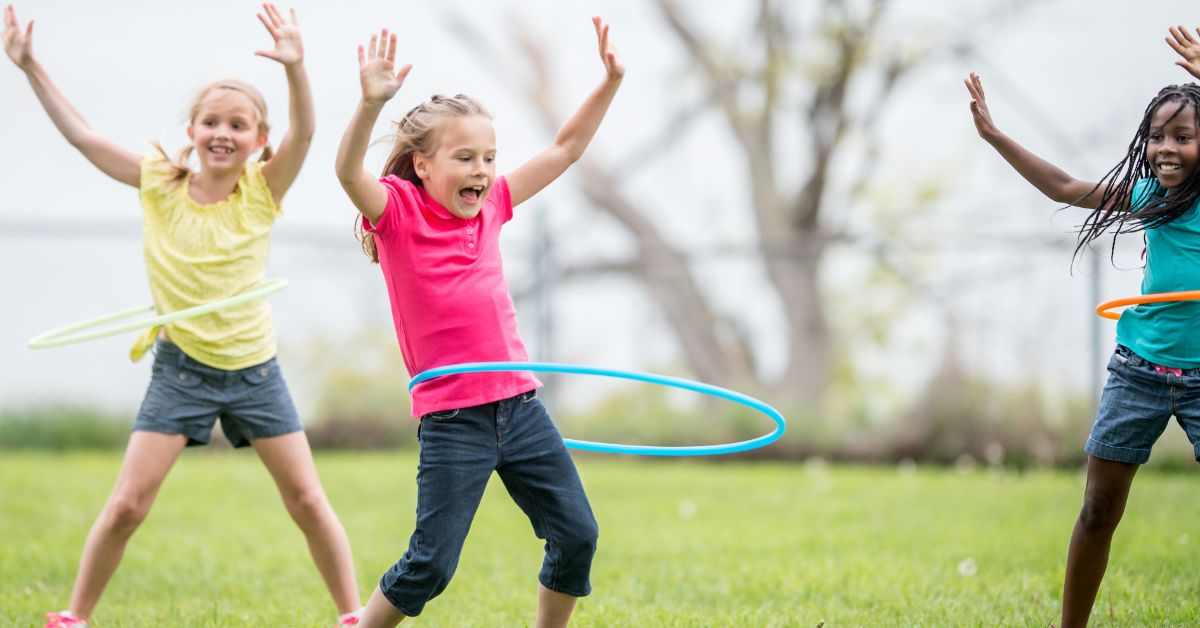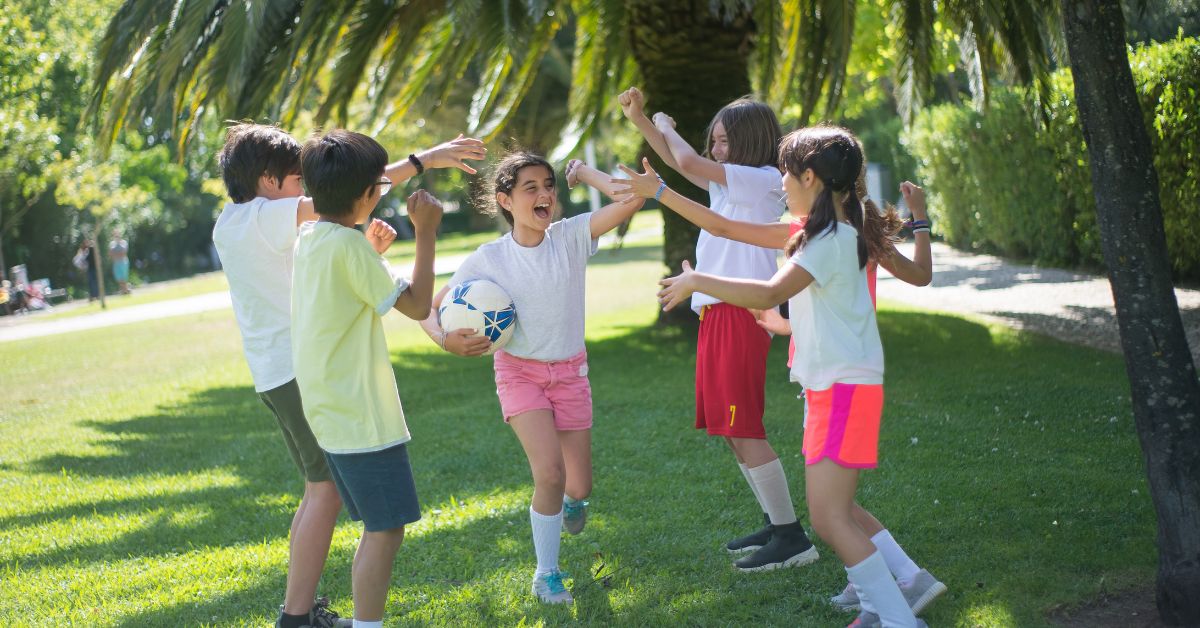Physical education doesn’t just build strong bodies—it also supports better focus, emotional well-being, and lifelong healthy habits. For homeschool families, prioritizing fitness can sometimes seem like an added challenge, but it doesn’t have to be. With thoughtful planning, physical education can become one of the most enjoyable parts of your daily routine.
Below, we’ve outlined the top five PE practices to help you develop a fun, effective fitness program tailored to your elementary-aged homeschooler.
1. Build A Flexible And Varied Weekly PE Schedule
Creating a consistent schedule for physical education ensures regular activity and helps your child develop a range of physical skills. A varied routine also keeps kids engaged and less likely to see exercise as a chore. Homeschool physical education ideas should blend indoor and outdoor activities to match your space, resources, and even the weather.
Suggested Steps for Building a Weekly Routine:
- Mix Activity Types
Introduce different forms of movement throughout the week. Examples include stretching, aerobic activities, and strength training. This variety ensures your child works on multiple physical aspects, such as flexibility, endurance, and coordination.
- Set Time for Free Play
While structure is useful, free play is equally important. It allows children to explore physical movement creatively, which can build confidence and motor skills.
- Adjust to Age and Skills
Tailor activities to your child’s current abilities, and always include challenges that push them just the right amount outside their comfort zone.
Here’s a sample beginner-friendly routine you can adapt:
- Monday: 30 minutes of yoga or stretching in the morning, paired with a 15-minute walk later.
- Wednesday: Outdoor play at the park for 40 minutes, focusing on games like soccer or tag.
- Friday: A mix of indoor dance, skipping rope, and basic strength exercises like squats.
Experiment with different combinations until you find what works best for your child’s energy levels and interests.
2. Introduce Backyard And Outdoor Games For Dynamic Cardio
Cardio is essential for improving heart health, endurance, and energy levels. Elementary-age kids often respond enthusiastically to activities that feel more like play than structured exercise. Taking fitness outside provides space to move freely, fresh air, and sunshine, which are great for overall well-being.
Ideas for Outdoor Games:
- Scavenger Hunts with Movement
Design scavenger hunts using natural elements like leaves, rocks, or flowers if you’re in a park or backyard. Add physical tasks such as running between clue points, hopping before picking up items, or crawling under obstacles for added fun.
- Obstacle Courses
Use items like cones, hula hoops, chairs, or ropes to create an obstacle course. Challenge your child to jump, climb, crawl, and sprint through it. For extra engagement, you can time them and encourage improvement over sessions.
- Parachute Games for Groups
If you have other homeschooling families nearby, incorporate games using a large parachute. These games promote teamwork while ensuring participants continually use their upper body and core muscles.
Outdoor games like these provide a fun way to get essential cardio while also working on motor skills, cooperation with peers, and quick decision-making. Even simple equipment like balls, frisbees, or jump ropes can create hours of movement-filled entertainment.

3. Use Reward-Based Fitness Challenges
One of the best ways to maintain your child’s motivation during physical education is by introducing fitness challenges. These create excitement, offer a sense of achievement, and model the importance of setting and reaching goals. Fitness challenges work particularly well when tied to gradual progress or rewards. Plus, they offer measurable outcomes, which can boost a child’s self-esteem.
Keep the challenges age-appropriate and focused on positive reinforcement. Here are a few you could try:
- Mini Strength Challenges
Begin small with tasks like ten push-ups or five minutes of wall sits. Track progress over several weeks and slowly increase intensity. Create a colorful chart to mark milestones, which motivates younger children visually.
- Step Counting Goals
A step tracker (or even an affordable pedometer) can add fun to daily walks or jogs. Set a friendly competition within the family to see who reaches the most steps in a week!
- Skill Mastery
Encourage your child to focus on a specific skill for improvement, such as shooting basketball hoops, achieving cartwheels, or mastering a new yoga pose. Celebrate their achievements with small rewards like a sticker or a trip to the park.
Challenges help instill perseverance and personal accountability, both of which are vital qualities for fitness and life.
4. Incorporate Activities For Physical And Emotional Balance
Children need more than just physical movement—they also benefit greatly from activities that foster emotional well-being and mindfulness. Fitness is not solely about intense exercises; it’s also about teaching your child the value of taking care of their mind and body as a unit.
Free-Form Dance for Joyful Movement
Free dance sessions can bring a sense of freedom and delight. Play your child’s favorite upbeat songs and allow them to move however they want. Alternatively, work on co-creating simple choreographies to improve rhythm, coordination, and memory.
Yoga and Stretching for Relaxation and Flexibility
Yoga is especially effective for elementary-age children. Not only does it enhance flexibility, but it also boosts focus and reduces stress. Start with basic poses like cat-cow, butterfly pose, or tree pose. Select playful, kid-friendly yoga videos to keep them engaged while teaching valuable breathing techniques.
These practices ensure that your child learns early how to reflect, release built-up energy, and return to lessons or other tasks refreshed. Incorporating slower-paced, mindful elements alongside cardio and strength-based efforts teaches balance—essential for both physical and mental harmony.
5. Connect With Community-Based Sports And Resources
Although homeschooling allows flexibility, there’s no reason to forgo traditional group sports or social fitness opportunities. Getting involved in community sports programs gives your child essential social interactions while learning teamwork, resilience, and discipline. These activities also provide experience beyond the at-home setting.
Explore These Community Options:
- Local Homeschool Leagues
Many cities now offer homeschool-specific sports leagues for soccer, basketball, or baseball. These leagues operate during school hours, which makes enrollment more flexible for homeschool parents.
- Martial Arts or Dance Studios
Most martial arts or dance studios have lesson options by age and experience. Activities like taekwondo or ballet are fantastic for building discipline, strength, and focus.
- Swimming Classes
Swimming is a life-saving skill and a full-body workout. Consider enrolling your child in swimming lessons at your local pool for benefits ranging from lung capacity improvement to social growth through team swim classes.
- Nature Clubs or Outdoor Groups
Joining a group that focuses on nature hikes, gardening, or outdoor clean-ups will help your child stay physically active while also instilling environmental awareness.
The sense of inclusion and friendly competition these programs provide will encourage your child to explore recreational interests and develop fitness habits they enjoy.
Physical education in homeschooling doesn’t have to feel like another daunting task on your to-do list—these homeschool physical education ideas make it accessible, flexible, and enjoyable. By involving kids in a mix of dynamic activities, goal-driven challenges, and mindful movement, you’re setting them up for a lifetime of health and active living.





